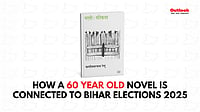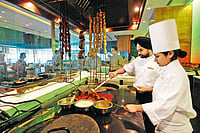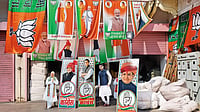Chaudhary saheb, as Rashtriya Lok Dal (RLD) chief Ajit Singh was popularly known, succumbed to Covid on May 6, just when things were beginning to look up for him again. An unsparing appraisal of his legacy may paint him as a politician with fickle ideological convictions, who constantly changed political partners for short-term gains. Over the past six months, he had desperately tried to make amends. The agitation triggered by the Centre’s farm laws, coupled with economic and social unrest across western Uttar Pradesh, had given him a recipe for the RLD’s resurgence. Despite a raging pandemic, he and his son, former Mathura MP Jayant Chaudhary, reached out to their electorate to revive the social cohesion that his father, former PM Chaudhary Charan Singh, had painstakingly built between Jats and Muslims. The recent panchayat poll results in Mathura proved that the efforts were paying off, with RLD-backed candidates winning big against their saffron rivals.
With his party drawing a blank in two consecutive Lok Sabha polls, Ajit Singh had spent the past seven years on the margins of UP politics. Political wilderness was alien to him until his shock defeat on his family turf of Baghpat in 2014 and the narrow miss in Muzaffarnagar in 2019. The 2013 communal riots in Muzaffarnagar, the rise of the BJP as the new claimant of western UP’s Jat votebank and the way these events altered the region’s political idiom had turned Singh into a pariah in his karmabhoomi of 35 years.
Since 1986, when he first took the political plunge as heir to the Jat legacy of Charan Singh, Ajit Singh had been courted with equal zeal by every dominant political party—both nationally and within UP. Despite his slipping grip over western UP’s formidable Jat votebank, Singh had made himself indispensable to the state’s power politics and its mercurial alliances. His political innings saw him serve seven terms in Parliament (one in the Rajya Sabha and six in the Lok Sabha) and four stints as Union minister in governments led by different political formations—V.P. Singh’s National Front, P.V. Narasimha Rao’s Congress, Atal Behari Vajpayee’s BJP-led NDA and finally Dr Manmohan Singh’s UPA.
Evidently for Singh—India’s first politician with degrees from IIT-Kharagpur and Illinois Institute of Technology, Chicago—the gamble of giving up a 15-year-long career in computer engineering in the US for Indian politics had paid off. But the fall was as dramatic as his rise had been when as a political greenhorn he outmanoeuvred seasoned leaders like Mulayam Singh Yadav and Hemwati Nandan Bahuguna to take control of the erstwhile Lok Dal in 1986.


























